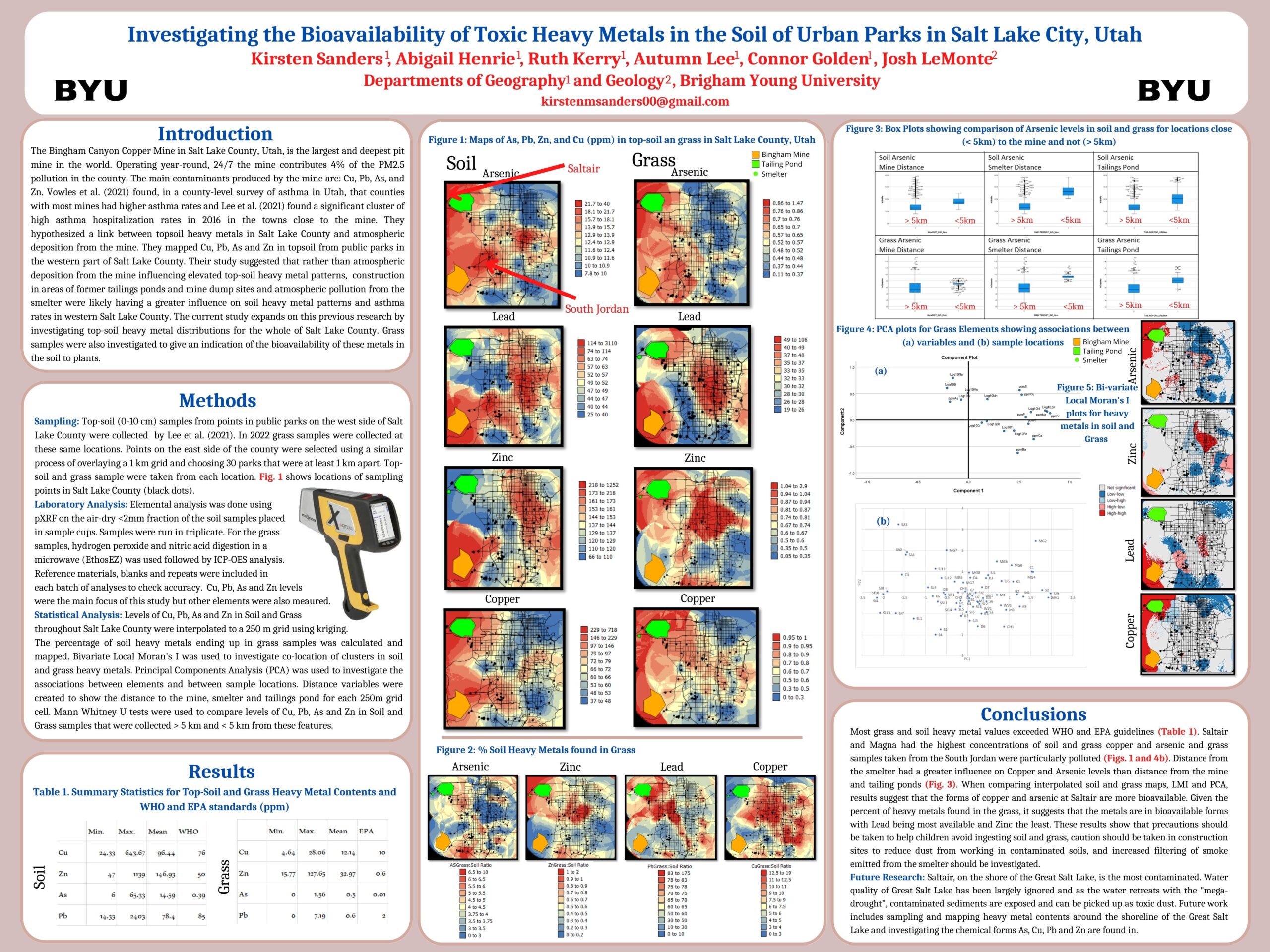Presenter Name: Kirsten Sanders
Description
Bingham Copper Mine, Salt Lake Valley, Utah releases toxic heavy metals (copper, lead, zinc and arsenic) into the environment that can have adverse health impacts such as respiratory illness, cancer, heart disease, violent behavior and depression. Uptake of metals by plants can indicate their bioavailability. Soil and grass samples were collected throughout the Salt Lake valley from public parks. A 1 km grid was overlaid on a map of the Salt Lake Valley and parks were chosen from every other grid square resulting in 58 parks. Samples were cut from the turfgrass and topsoil samples (0-10cm) were collected at each park. For large parks two samples were collected at opposite sides of the park. Coordinates were recorded at each sample location. The metal content of the soil samples was determined using a portable X-ray fluorescence analysis and ICP-OES was used to determine the metal content of grass samples. A hyperspectral radiometer was also used to analyze the grass samples. The wavelengths sensitive to enrichment with the heavy metals of interest were determined using separability indices. Correlation analysis was performed to determine the strength of relationships between reflectance values of grass samples in these key wavelengths and heavy metal concentrations in the grass measured using ICP-OES. The correlations between soil heavy metal and grass heavy metal correlations were also used as a measure of bioavailability of the metals. Contamination risk zones are determined through interpolating soil and grass heavy metal contents throughout the Salt Lake valley. Determining the wavelengths that are sensitive to heavy metals in this research suggests that hyperspectral surveys by drone could help identify areas with a high risk of contamination and high degree of heavy metal bioavailability. Drone survey could greatly reduce the cost of sampling and analysis for risk assessment.
University / Institution: Brigham Young University
Type: Poster
Format: In Person
Presentation #C59
SESSION C (1:45-3:15PM)
Area of Research: Social Sciences
Email: kirstenmsanders00@gmail.com
Faculty Mentor: Ruth Kerry

